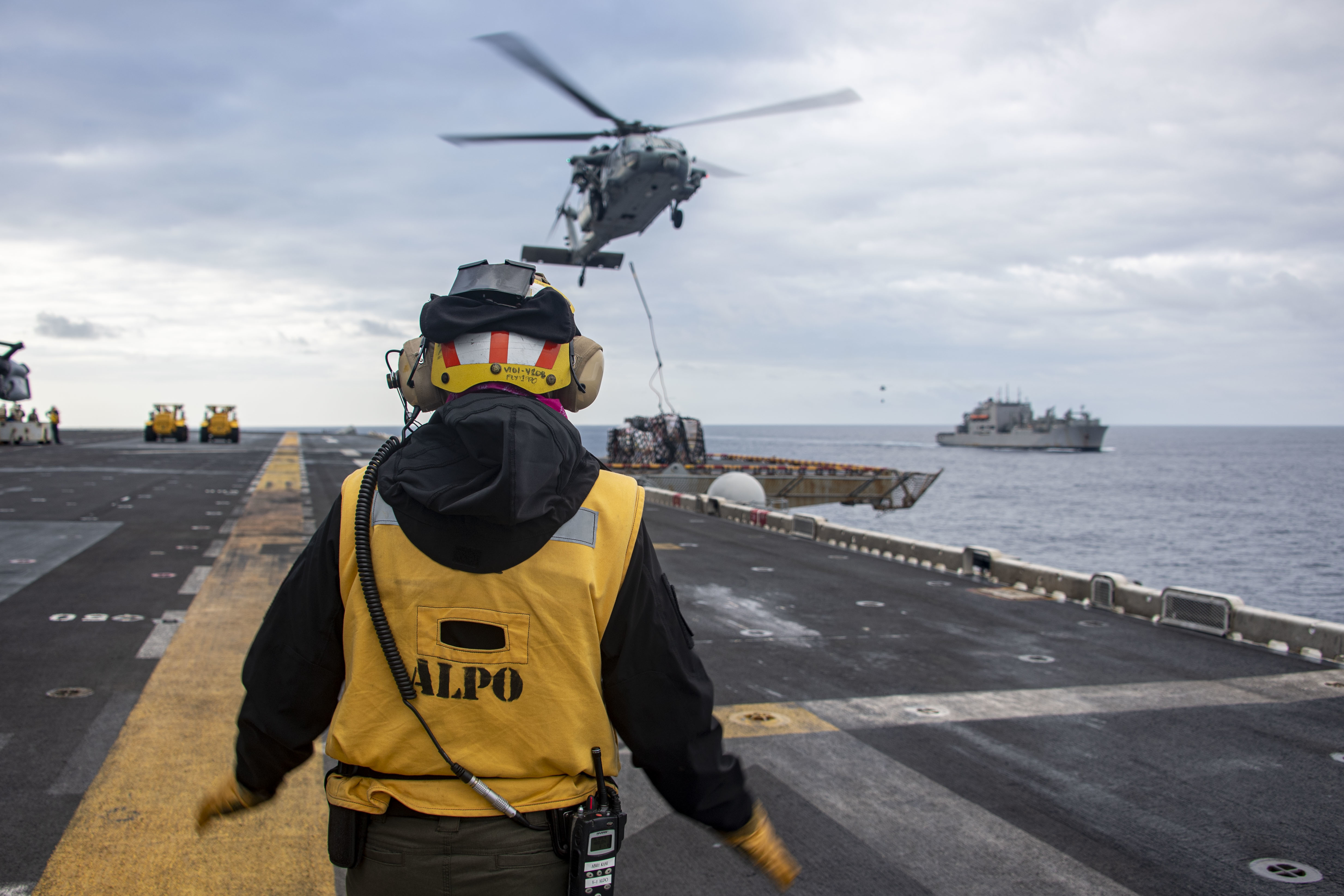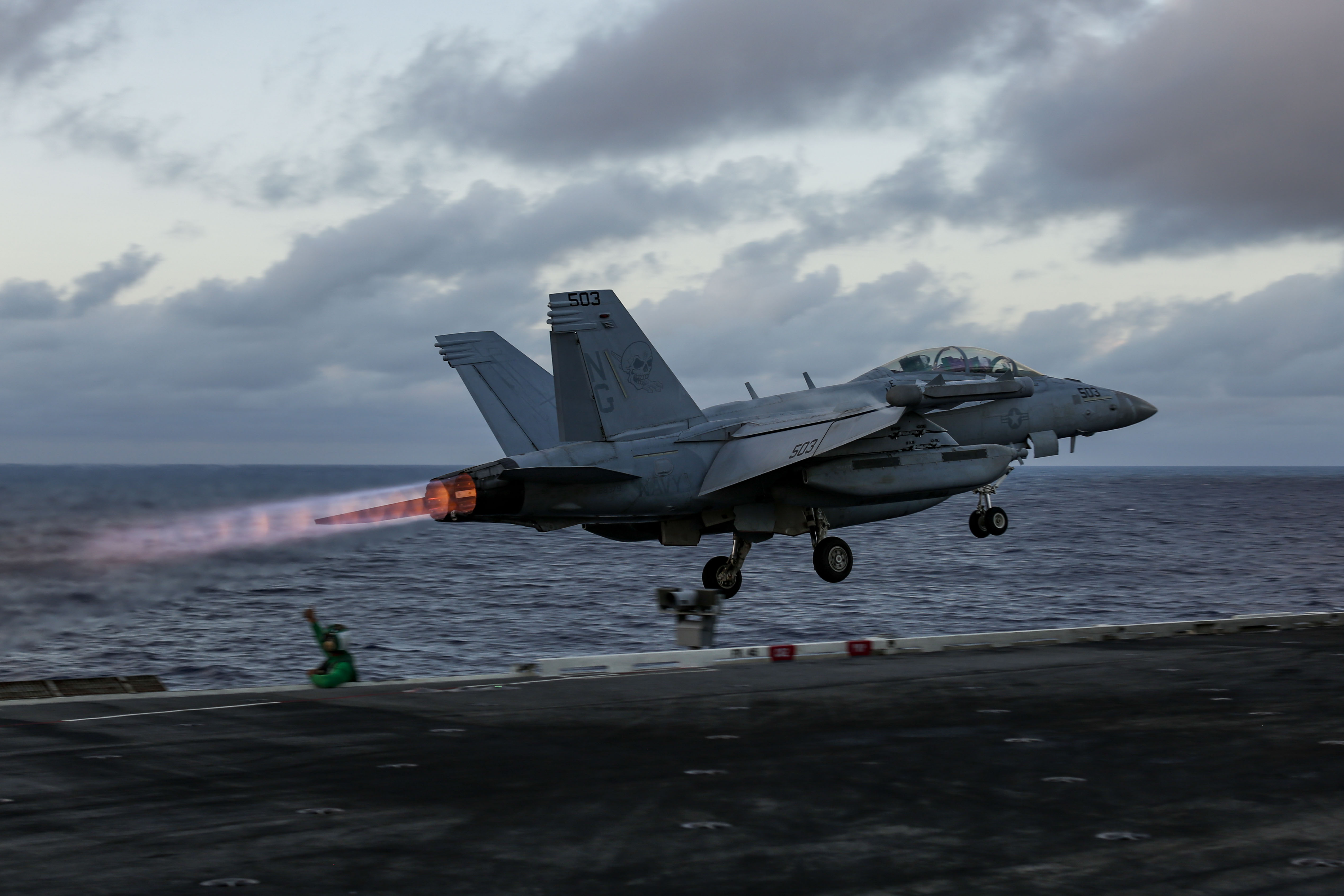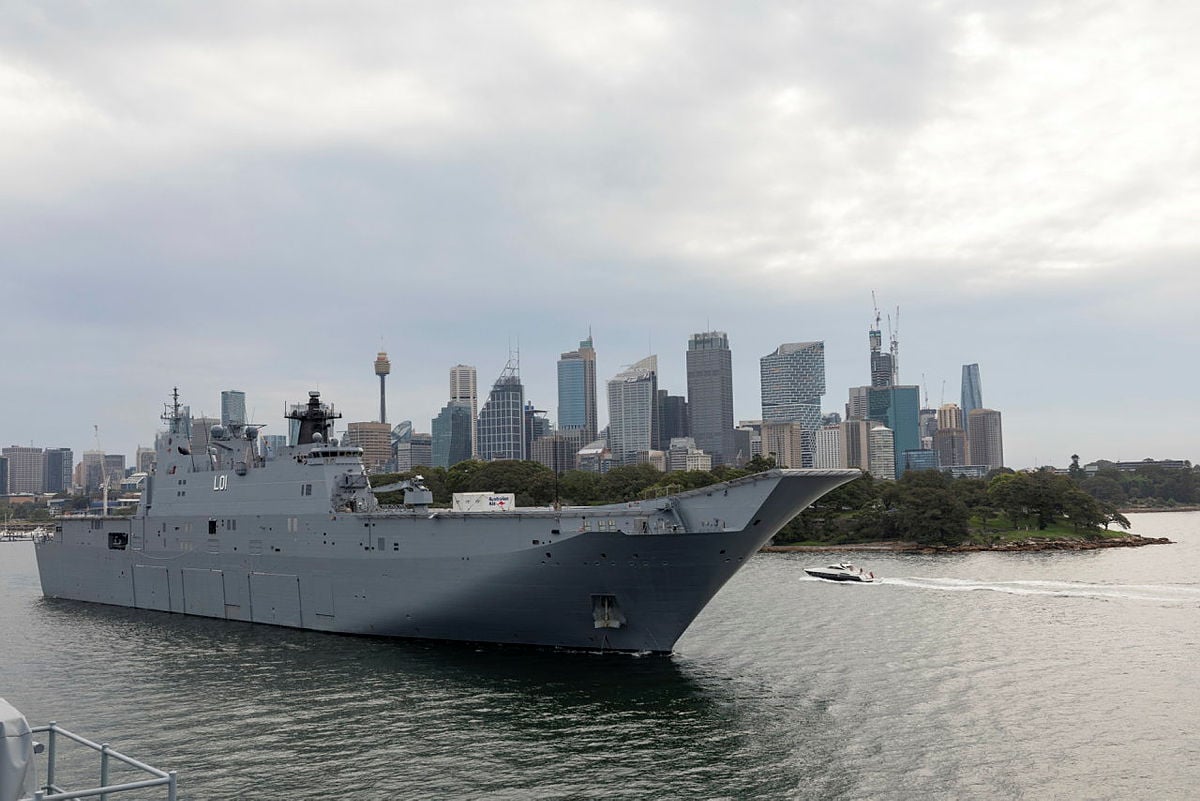
KUALA LUMPUR, Malaysia – A U.S. Navy carrier strike group and two amphibious ready groups are drilling in the Philippine Sea with the Japan Maritime Self-Defense Force.
Exercise Noble Fusion began on Thursday in the Philippine Sea with the JMSDF and elements of the U.S. Marine Corps and U.S. Air Force, the 3rd Marine Expeditionary Brigade said in a news release.
Taking place in the Luzon and Miyako Straits, Noble Fusion is a joint and combined naval expeditionary exercise that includes the Abraham Lincoln Carrier Strike Group, the America Amphibious Ready Group with the 31st Marine Expeditionary Unit embarked and the Essex Amphibious Ready Group with the 11th Marine Expeditionary Unit embarked.
“Integrating the elements of the dual-MEU/ARG team with the power of the carrier strike group, joint elements and our Japanese counterparts in a distributed operation demonstrates our ability to command and control lethal forces in contested areas, create strategic advantage and integrated deterrence,” Col. Michael Brennan, an operations officer for Combined Task Force (CTF) 79, said in the release.
“Our sea-denial operations with naval expeditionary integration and littoral allies prepares us to counter potential adversarial aggressive actions in the First Island Chain.”
The 3rd MEB and Combined Task Force 76 are spearheading the drills.
“During the exercise, 3rd MEB became the Combined Task Force (CTF) 79. Together, CTF-76 and CTF-79 commanded and controlled the integrated naval expeditionary forces of the 11th and 31st Marine Expeditionary Units and Amphibious Squadrons 1 and 11, embarked aboard the USS Essex and USS America, respectively,” 3rd MEB said in the release. “Taking operational control of two MEUs while underway exemplifies the ability to conduct distributed command and control at sea.”
This is the first instance since 2018 that two MEU/ARGs are drilling in the Indo-Pacific, according to the Marine Corps.
The exercise started with the Lincoln CSG and the Essex ARG with the 11th MEU performing an amphibious operation to demonstrate terrain seizure and flying various aircraft.
“AV-8B Harriers and MV-22B Ospreys of the 11th MEU flew from Essex and rehearsed integrated air operations with a Navy E-2D Advanced Hawkeye flying from USS Abraham Lincoln (CVN 72) all within the Luzon Strait,” the 3rd MEB said in the release. “Simultaneously, 11th MEU Marines and Sailors aboard the Essex conducted operational checks on the Stalker unmanned aerial system and loaded Polaris MRZR light tactical all-terrain vehicle with other equipment into MV-22 Ospreys.”

On Friday, the America ARG with the 31ST MEU performed “two live fire air-to-ground strikes along with one simulated strike” in a first island chain training range with F-35B Lightning II Joint Strike Fighters.
Air Force F-15C Eagles from Kadena Air Base’s 18th Wing and Marine Corps F-35Bs from Marine Corps Air Station Iwakuni, Japan, worked with a Task Force 72 P-8 Poseidon to perform a maritime strike, as Japanese destroyer JS Kongo (DDG-173) and American destroyer USS Dewey (DDG-105) helped with command and control, according to the release.
“In order to support the aircraft at distance, and increase time on station, the USAF 18th Wing supported with KC-135 Stratotanker aircraft and MAG-12 provided KC-130J Hercules aircraft for air-to-air refueling. In the evening, FA-18E Super Hornets and an E-2D Advanced Hawkeye flew from Lincoln to conduct simulated strikes against live surface targets in the First Island Chain,” the 3rd MEB said in the release.
The America ARG includes USS America (LHA-6), landing platform dock USS Green Bay (LPD-20) and landing ship dock USS Ashland (LSD-48) with elements of the 31st MEU embarked. The Essex ARG includes USS Essex (LHD-2), landing ship dock USS Pearl Harbor (LSD-52) and landing platform dock USS Portland (LPD-27) with the 11th MEU embarked. The Lincoln CSG includes USS Abraham Lincoln (CVN-72) with embarked Carrier Air Wing (CVW) 9; cruiser USS Mobile Bay (CG-53); and destroyers USS Gridley (DDG-101), USS Spruance (DDG-111), USS Fitzgerald (DDG-62) and USS Sampson (DDG-102). Sampson is currently detached and operating near Tonga in support of humanitarian and disaster relief operations.
In other regional developments, 20 ships from the Russian Navy’s Pacific Fleet departed on Tuesday from their home ports for the Sea of Japan and the Sea of Okhotsk to carry out their part in a fleet-wide Russian Navy exercise, according to a Russian Ministry of Defence news release. Among the ships are destroyers RFS Marshal Shaposhnikov (543) and RFS Admiral Panteleyev (548), corvettes RFS Sovershennyy (333), RFS Gromkiy (335), RFS Gremyashchiy (337) and RFS Hero of the Russian Federation Aldar Tsydenzhapov (339); and missile range instrumentation ship RFS Marshal Krylov (331).
On the same day, 10 other ships from the Russian Pacific Fleet headed to the waters of the Avacha Bay off the coast of Kamchatka to perform training and combat exercises. The exercise will involve joint tactical maneuvering, ship groups destructing targets, anti-submarine warfare, air defense at-sea operations and gun and anti-aircraft missile firings at various targets. Ships involved are corvettes RFS Smerch (423), RFS Kholmsk (369), RFS Ust-Ilimsk (362) and RFS MPK-107 (332), along with minesweepers and support ships.

Over in Australia, the Australian Department of Defence announced on Wednesday that frigate HMAS Arunta (FFH151) had departed Fleet Base East, Sydney, on Jan. 28 for a three-month regional presence deployment. The frigate will undertake a number of navy-to-navy activities with Australia’s regional partners and participate in various maritime exercises, though it did not provide specifics.
Meanwhile, Royal New Zealand Navy replenishment ship HMNZS Aotearoa (A11) departed Lyttelton on Friday and is heading south to support Antarctic environmental and scientific programs. This is Aotearoa’s first trip to Antarctica and the first time in more than 50 years that a Royal New Zealand Navy ship will perform an Antarctic resupply of McMurdo Station and Scott Base, according to a RNZN news release. Aotearoa just returned from a deployment to Tonga, where it conducted relief operations following the eruption of Tonga’s Hunga Tonga-Hunga Ha’apai underwater volcano last month.
New Zealand offshore patrol vessel HMNZS Wellington (P55) and multi-role support vessel HMNZS Canterbury (L421) are still on station in Tonga and international naval vessels continue to perform relief operations, with the Royal Australian Navy landing helicopter dock HMAS Adelaide (L01) launching its embarked Australian Army CH-47F helicopters to conduct aerial reconnaissance on Thursday at the request of the Tongan government. Adelaide had sailed to Tonga with three helicopters embarked on it.
[#OpTongaAssist] Mobilisés pour apporter une aide d’urgence aux îles Tonga, les patrouilleurs La Glorieuse et Arago ont achevé hier la livraison de près de 50 t de fret humanitaire, 10000 litres d’eau potable et 2000 rations, conformément au protocole sanitaire sur place. pic.twitter.com/VCnkyGjSRF
— Marine nationale (@MarineNationale) February 3, 2022
French Navy patrol vessel FNS Arago (P675) and offshore patrol vessel FNS La Glorieuse (P686) arrived in Tonga on Thursday, delivering 50 tons of humanitarian aid supplies, 10,000 liters of water and 2000 ration packs.





